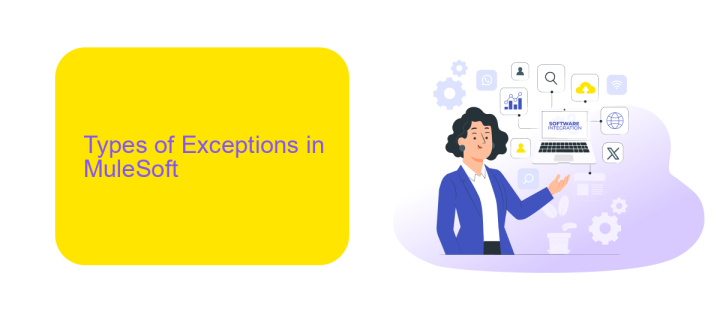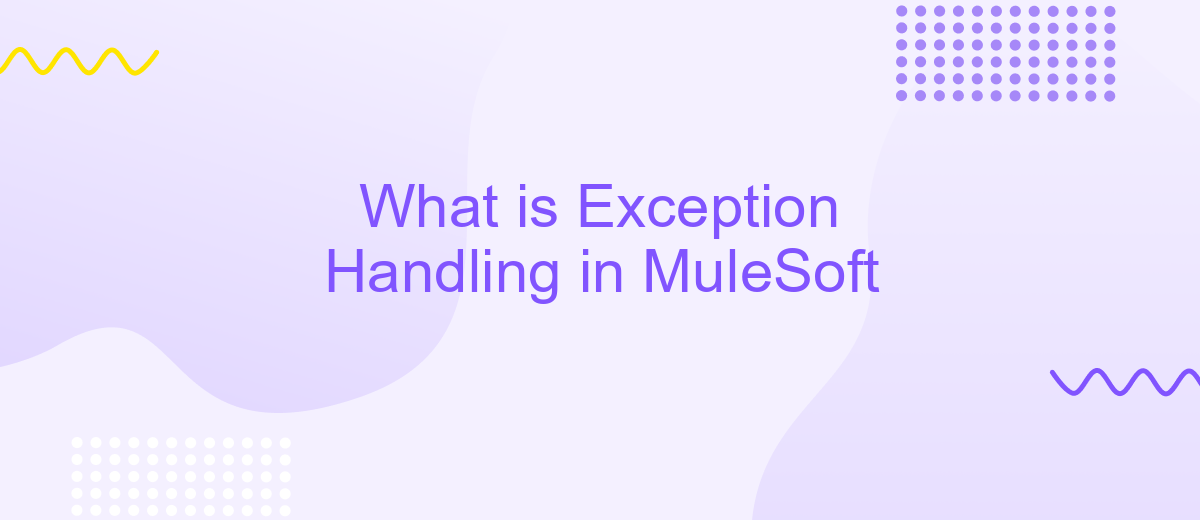What is Exception Handling in MuleSoft
Exception handling in MuleSoft is a critical component for building robust and reliable integrations. It involves the systematic process of identifying, managing, and responding to errors that occur during the execution of Mule applications. By implementing effective exception handling strategies, developers can ensure seamless data flow, minimize downtime, and enhance the overall performance and resilience of their integration solutions.
What is Exception Handling?
Exception handling is a crucial aspect of software development that ensures the smooth functioning of applications by managing errors effectively. In the context of MuleSoft, exception handling is vital for maintaining the reliability and stability of integrations. When an error occurs, proper exception handling allows the system to manage it gracefully without causing a complete failure.
- Identify and capture exceptions
- Log error details for debugging
- Provide meaningful error messages
- Retry failed operations
- Route errors to alternative flows
In MuleSoft, exception handling can be configured using various components like Try, Catch, and Finally scopes, along with global error handlers. These tools allow developers to create robust integration solutions that can handle unexpected situations efficiently. Services like ApiX-Drive further enhance integration capabilities by offering automated workflows and seamless error management, ensuring that integrations run smoothly and reliably.
Types of Exceptions in MuleSoft

In MuleSoft, exceptions are critical for handling errors and ensuring smooth integration processes. There are primarily two types of exceptions: system exceptions and application exceptions. System exceptions are caused by issues within the Mule runtime or infrastructure, such as connectivity problems, timeouts, or server errors. These exceptions are often beyond the control of the developer and require robust error handling strategies to manage and mitigate their impact on the integration flow.
Application exceptions, on the other hand, are triggered by issues within the application logic, such as invalid data, business rule violations, or processing errors. These exceptions are usually predictable and can be handled programmatically within the Mule application. Tools like ApiX-Drive can be used to streamline integration setups and manage exceptions effectively, ensuring that data flows seamlessly between different systems and applications, thereby minimizing disruptions and maintaining data integrity.
Benefits of Exception Handling

Exception handling in MuleSoft provides a structured approach to managing errors and ensuring the robustness of integrations. It allows developers to anticipate potential issues and handle them gracefully, minimizing downtime and improving system reliability. This is particularly crucial for maintaining seamless operations in complex integration scenarios.
- Improved Reliability: By catching and managing exceptions, systems can continue to operate smoothly even when unexpected errors occur.
- Enhanced Debugging: Detailed error logs and messages facilitate quicker identification and resolution of issues, reducing development time.
- Better User Experience: Users encounter fewer disruptions and more informative error messages, leading to higher satisfaction.
- Maintain Data Integrity: Proper exception handling ensures that data is not corrupted or lost during integration processes.
- Streamlined Integrations: Tools like ApiX-Drive can be integrated with MuleSoft to automate exception handling, simplifying the overall integration workflow.
Incorporating robust exception handling mechanisms in MuleSoft not only enhances system reliability but also significantly improves the overall user experience. By leveraging services like ApiX-Drive, businesses can automate and streamline their integration processes, ensuring that errors are managed efficiently and effectively. This leads to more resilient and reliable systems, ultimately contributing to business continuity and success.
Best Practices for Exception Handling in MuleSoft

Effective exception handling in MuleSoft is crucial for ensuring the robustness and reliability of your integration solutions. By implementing best practices, you can minimize downtime and enhance the overall performance of your applications.
Firstly, it is essential to categorize exceptions to handle them appropriately. Different types of exceptions require different handling strategies, such as logging, alerting, or retrying. Secondly, always use global exception handling to manage unexpected errors across all flows consistently.
- Utilize Try-Catch scopes to isolate and manage exceptions at the flow level.
- Implement On Error Continue and On Error Propagate scopes to control error propagation.
- Leverage logging mechanisms to capture detailed error information for troubleshooting.
- Integrate with services like ApiX-Drive to automate error notifications and corrective actions.
By adhering to these best practices, you can create more resilient MuleSoft applications. Proper exception handling not only improves system stability but also enhances the user experience by ensuring seamless integration and timely resolution of issues.
Conclusion
Exception handling in MuleSoft is a critical aspect that ensures the robustness and reliability of your integrations. By effectively managing exceptions, you can prevent system failures, enhance user experience, and maintain the integrity of your data flows. MuleSoft provides a comprehensive set of tools and strategies for handling exceptions, including try-catch scopes, error handlers, and custom error messages. These features allow developers to create resilient applications that can gracefully handle unexpected situations.
Moreover, integrating MuleSoft with tools like ApiX-Drive can further streamline your exception handling processes. ApiX-Drive offers seamless integration capabilities, allowing you to connect various services and automate workflows without extensive coding. This not only simplifies the management of integrations but also enhances error handling by providing real-time monitoring and alerts. By leveraging MuleSoft's robust exception handling features alongside ApiX-Drive's integration services, organizations can achieve a higher level of operational efficiency and reliability.
- Automate the work of an online store or landing
- Empower through integration
- Don't spend money on programmers and integrators
- Save time by automating routine tasks
FAQ
What is Exception Handling in MuleSoft?
How can you implement exception handling in MuleSoft?
What are the different types of error handlers in MuleSoft?
How does MuleSoft differentiate between different types of exceptions?
Can you integrate MuleSoft with external services for automated error handling?
Apix-Drive will help optimize business processes, save you from a lot of routine tasks and unnecessary costs for automation, attracting additional specialists. Try setting up a free test connection with ApiX-Drive and see for yourself. Now you have to think about where to invest the freed time and money!


